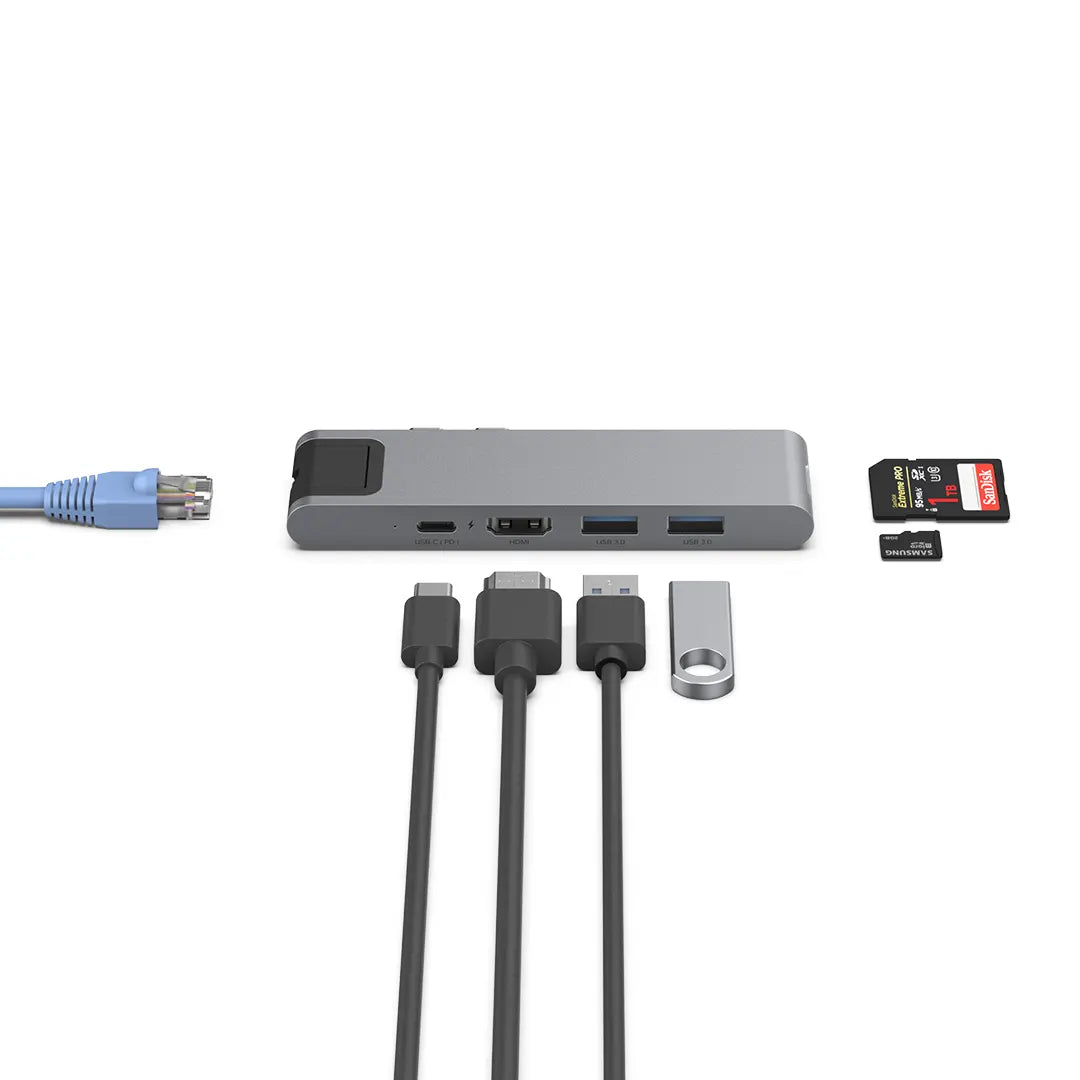April 14, 2023 | Words by Jackson
Laptops are getting thinner, which on one hand makes them more portable, but on the other hand, users have to make a choice between portability and functionality due to the decreasing number of ports.
To improve user experience, many people turn to various digital accessories for assistance. As a result, the research in this field has evolved to include not only the question of "what laptop should I buy," but also the additional question of "which digital accessories are suitable for me."
Today,ZikeTech will explain a question that many people are confused about: What is a hub? What is the difference between a hub and an expansion dock? And how should you choose?
First, let's take a look at the hub.A USB hub, also known as a USB splitter, can expand one USB port into multiple ports, allowing you to connect devices such as a desk lamp, computer fan, MP3 player, USB drive, voice recorder, digital camera, etc., depending on the number of ports available.
As we all know, the key to a thin and light laptop is the removal of many USB ports, and the purpose of a hub is to make up for this loss. After connecting a laptop to a hub, the number and types of available ports will increase, solving the problem of insufficient laptop ports. Additionally, it also avoids the problem of damage caused by frequent plugging and unplugging of the native ports, and can be connected and used in different scenarios.
Furthermore, by connecting a hub, you can expand the functions of the laptop by adding devices such as keyboards, mice, printers, and cooling fans. For example, a combination of hard drives, printers, and mice for office printing, and a combination of mice, USB drives, and projection pens for work meetings.
In addition, the most important function of a hub is data transmission.
Currently, the hubs available on the market are mainly divided into USB2.0 and USB3.0 models based on their transfer speeds, with theoretical transfer speeds of 480Mbps and 5.0Gbps, respectively.
We recommend that you choose aUSB3.0 hub, as it is compatible with USB2.0 functions, and it is up to you to judge which is better.If your needs are only limited to the above, then a hub is enough, as its efficiency is still based on the power of the laptop's motherboard. More complex functions would require an expansion dock.
A USB docking station is a device that turns a laptop into a desktop computer. It provides connections to multiple displays, LAN connections, the internet, and other external devices. As laptops become thinner and have fewer USB ports, USB docking stations offer multiple USB ports for multi-purpose use.
Currently, the mainstream docking stations on the market use the Type-C interface and support USB 3.0 and higher. The better docking stations can achieve USB 3.2 Gen2.
The most important aspect of a docking station is the core chip. Due to the multiple functions that a docking station performs, it can come equipped with different chips depending on the type of docking station. For example, for multi-display requirements, a docking station would use a high-speed Display Link chip to enable faster video transmission.
Docking stations offer a variety of ports, such as USB-C, HDMI, SD card slots, Ethernet, DP, etc. These ports can be used for screen mirroring, supporting Gigabit Ethernet, high-power fast charging, and other expansion requirements. Therefore, a docking station can handle much more than a splitter.
To improve the durability and safety of the product, the cost of a docking station, including its shell and chips, is higher than that of a splitter. The more ports and functions a docking station has, the higher the cost.
Choosing the right digital product for oneself is crucial. Therefore, when purchasing a docking station, one should select the correct one based on their current devices and usage needs.
It is important to note that these accessories directly affect or coexist with the laptop's performance. Therefore, it is essential to choose products with quality assurance to avoid data loss.
In terms of appearance and material, the market mainly offers PC, ABS, PC+ABS, and aluminum alloy. One should choose according to their budget and personal preference.
Of course, it also depends on whether the product has safety measures, such as ZikeTech's splitter, which includes over-current protection, over-voltage protection, short-circuit protection, temperature protection, and leakage protection.
When selecting a splitter, choose the appropriate version based on the device. A Type-A splitter typically supports USB 3.0 at most, while a Type-C splitter can support up to USB 3.2 Gen2.
Some USB splitters can directly connect to 2.5-inch hard drives and other small devices, but larger power devices require an external power interface.
Therefore, whether the splitter is equipped with an additional power supply interface is also an important criterion for choosing a splitter.
Both splitters and docking stations can help us expand our interfaces effectively, but the actual selection depends on our needs.
If one only needs to connect USB devices, then a 4-port/7-port splitter will suffice. If one also wants to charge their laptop, connect to a network via Ethernet, or expand with HDMI, then they should choose a docking station.
ZikeTech







Which function do you prioritize when selecting a splitter or docking station? Please leave a comment and share your thoughts.